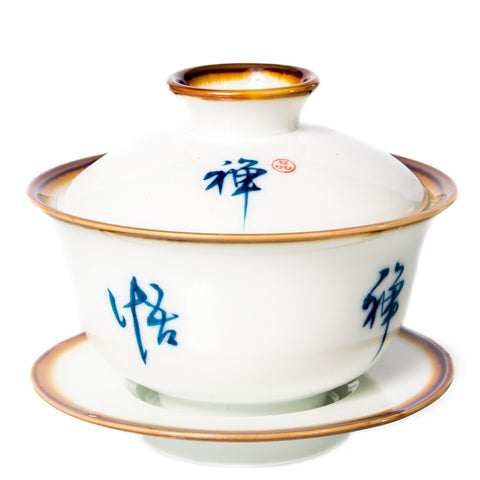Any tea advice blog you turn to will say the same thing. Never use soap to wash your teaware. This is absolutely correct. Soaps and detergents can impart unfavorable flavors on delicate teaware. Usually, a quick rinse with hot water should suffice. However, what about those times that our teaware needs a little extra cleaning?

The Importance of Properly Cleaning Teaware
Wet tea leaves left sitting out can easily mold. It is essential to compost the tea leaves as soon as you end the tea ceremony or tea session. Depending on the circumstances, like temperature and type of tea leaves, they can begin to mold within hours. Especially if you are using porous unglazed teaware, this can heavily impact it for future brews.
Porous teapots like the ones made from Yixing and Chaozhou clay are unique because of their ability to absorb the tea's flavors. For this reason, it is always best to stick to one tea category, and even with similar teas within one category.
After hundreds of brews, the unglazed teapot will be so well coated with the tea leaves' natural oils that even by putting plain hot water in the teapot, you will get a potent brew of tea just from the teapot itself.
Naturally, any amount of mold will significantly impact the teapot's qualities. Read more on taking care of Yixing teaware here.
If using silver teapots, it is also crucial to discard used tea leaves immediately. If left unattended, the mold can tarnish the silver. This may be much more challenging to clean later, so it is best to immediately take care of it. The same goes for porcelain teaware. Although they can withstand the mold for more extended periods of time, they might still change color if untended for too long.

Making Cleaning a Part Of The Meditation
Many of us will treat a gongfu tea ceremony, or a Japanese tea ceremony as a ritual, a meditation. But do we always include cleaning as a part of that meditation? We would assume that most of us do. But certainly, there have been times where you just might omit some steps, or perhaps you were in a rush and left the tea leaves sitting in the unglazed Yixing teapot for a day too long.
Read more on tea and meditation here.
Making cleaning a part of the tea ritual, just like pouring the tea itself, is a good step towards prolonging our precious teaware life.
We start each tea session with the hot water rinse. Using the hot water prepared for our tea, we gently rinse the teapot or gaiwan, cha hai, teacups, and tea pet. This wakes up the teaware, preparing it for the aromatic tea.
Once we are finished with the tea ceremony, it is only right to honor the tea and teaware by finishing with proper cleaning. If cleaned right away, the teaware doesn't require much. Just a quick rinse with hot water should suffice. Ensure that all tea leaves (even the smaller broken ones) are carefully cleaned as they can also mold. A tea needle that comes with most cha dao sets is incredibly convenient for removing tea leaves out of spouts and strainer for teapots.
It's important to remember to carefully wipe all teaware and tea trays with a dry cloth after use.
How about in the rare case that the teaware wasn't tended to fast enough? Perhaps mold has already started growing. Or maybe a dark tea like pu-erh was left in a porcelain gaiwan and has stained the white color.
In this case, we still don't advise to use any dish detergent, although some thorough cleaning is in order. You might not get away with a simple hot water rinse this time.
Tip No. 1: The Tea Cloth Method
The tea cloth method works well with any teaware material. Be it porcelain, glazed/unglazed clay, glass, or silver. Simply take a cloth (ideally one you already reserve for tea ceremonies and the like), wrap it around your finger, dampen it, and scrub the teaware until it's clean. You may need to apply some pressure to get it clean, especially for tougher stains, but still, try to be gentle, especially with fragile teaware.
Tip No. 2: Baking Soda
Please only use this method for glazed clay teaware and porcelain. Make some paste by mixing baking soda and water. Take a cloth and scrub the teaware until clean. This method works well for cleaning stains and mold but is not the most gentle, so only try this if you really need to.
Tip No. 3: Seasoning
This particular tip will work best with Yixing teaware that you may need to give an extra nice clean. Seasoning porous clay requires gently simmering it in a pot of water, often times with tea leaves. Giving the teaware a prolonged boil should rid it of any unwanted bacteria and smells. Read more about it this method here.
Have you ever had to deal with giving your teaware an extra good cleaning? Share your methods with us in the comments below!
